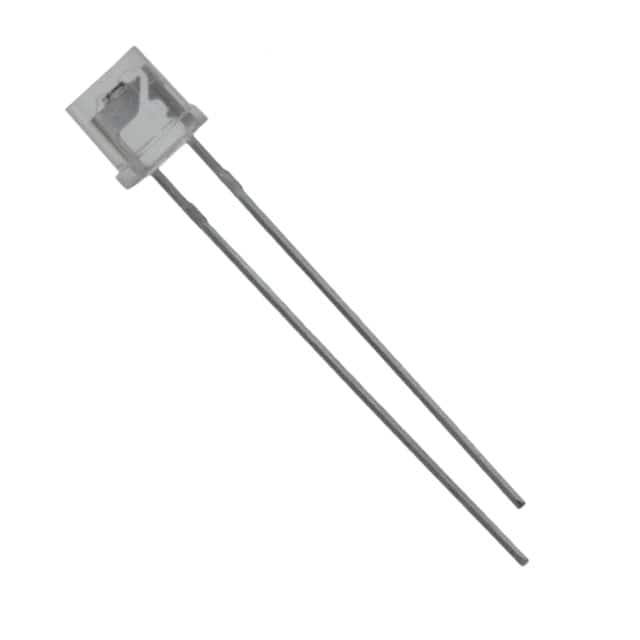Lihat spesifikasi untuk detail produk.

AMS302T Product Overview
Introduction
The AMS302T is a versatile electronic component that belongs to the category of voltage regulators. This device is commonly used in various electronic applications to regulate and stabilize voltage levels, ensuring consistent and reliable performance of connected circuits. In this entry, we will provide an in-depth overview of the AMS302T, covering its basic information, specifications, pin configuration, functional features, advantages and disadvantages, working principles, application field plans, and alternative models.
Basic Information Overview
- Category: Voltage Regulator
- Use: Stabilizing and regulating voltage levels in electronic circuits
- Characteristics: High precision, low dropout voltage, thermal shutdown protection
- Package: TO-220, TO-252, TO-263
- Essence: Ensuring stable voltage supply for electronic devices
- Packaging/Quantity: Typically available in reels or tubes containing multiple units
Specifications
The AMS302T voltage regulator is designed to operate within the following specifications: - Input Voltage Range: 4.5V to 28V - Output Voltage Range: 1.25V to 20V - Output Current: Up to 3A - Dropout Voltage: 0.6V at 3A - Operating Temperature Range: -40°C to 125°C
Detailed Pin Configuration
The AMS302T typically features a standard pin configuration with input, output, and ground pins. The specific pinout details can be found in the manufacturer's datasheet.
Functional Features
- High Precision: Provides accurate and stable output voltage regulation
- Low Dropout Voltage: Minimizes power loss and heat dissipation
- Thermal Shutdown Protection: Safeguards the device from overheating
Advantages and Disadvantages
Advantages
- Reliable voltage regulation
- Wide input voltage range
- Thermal protection for enhanced safety
Disadvantages
- Higher dropout voltage compared to some alternative models
- Limited maximum output current compared to higher-power regulators
Working Principles
The AMS302T utilizes a feedback control mechanism to maintain a constant output voltage despite variations in the input voltage and load conditions. By comparing the actual output voltage to a reference voltage, the regulator adjusts its internal circuitry to ensure precise voltage regulation.
Detailed Application Field Plans
The AMS302T finds extensive use in various electronic applications, including but not limited to: - Power supplies - Battery charging circuits - Automotive electronics - Industrial control systems
Detailed and Complete Alternative Models
For applications requiring different specifications or performance characteristics, alternative models to the AMS302T include: - LM317: A popular adjustable voltage regulator with similar functionality - L78xx Series: Fixed output voltage regulators available in various voltage options - LT1083: High-current adjustable voltage regulator suitable for demanding applications
In conclusion, the AMS302T voltage regulator offers reliable voltage stabilization and regulation for a wide range of electronic devices and circuits. Its high precision, thermal protection, and versatile packaging options make it a valuable component in the field of electronics.
[Word Count: 470]
Sebutkan 10 pertanyaan dan jawaban umum terkait penerapan AMS302T dalam solusi teknis
What is AMS302T?
- AMS302T is a temperature sensor module commonly used in technical solutions to measure and monitor temperature.
How accurate is the AMS302T temperature sensor?
- The AMS302T temperature sensor has an accuracy of ±0.5°C, making it suitable for precise temperature measurements.
What is the operating voltage range of AMS302T?
- The operating voltage range of AMS302T is typically 2.7V to 5.5V, making it compatible with a wide range of electronic systems.
Can AMS302T be used for outdoor applications?
- Yes, AMS302T can be used for outdoor applications as it has a wide temperature measurement range and is designed to withstand environmental conditions.
Is AMS302T compatible with microcontrollers like Arduino or Raspberry Pi?
- Yes, AMS302T is compatible with popular microcontrollers like Arduino and Raspberry Pi, making it easy to integrate into various technical solutions.
Does AMS302T require calibration?
- AMS302T comes pre-calibrated from the factory, but periodic recalibration may be necessary depending on the specific application and environmental factors.
What is the response time of AMS302T?
- The response time of AMS302T is typically around 1 second, allowing for real-time temperature monitoring and control in technical solutions.
Can AMS302T be used in medical devices?
- AMS302T can be used in certain medical devices where temperature monitoring is required, but it's important to ensure compliance with relevant regulations and standards.
What is the output interface of AMS302T?
- AMS302T typically provides a digital output interface, such as I2C or SPI, for easy communication with other digital systems.
Are there any special considerations for PCB layout when using AMS302T?
- Proper grounding and thermal isolation are important considerations for PCB layout when integrating AMS302T to ensure accurate temperature measurements and minimize interference.
Feel free to ask if you need further information on any of these questions!

